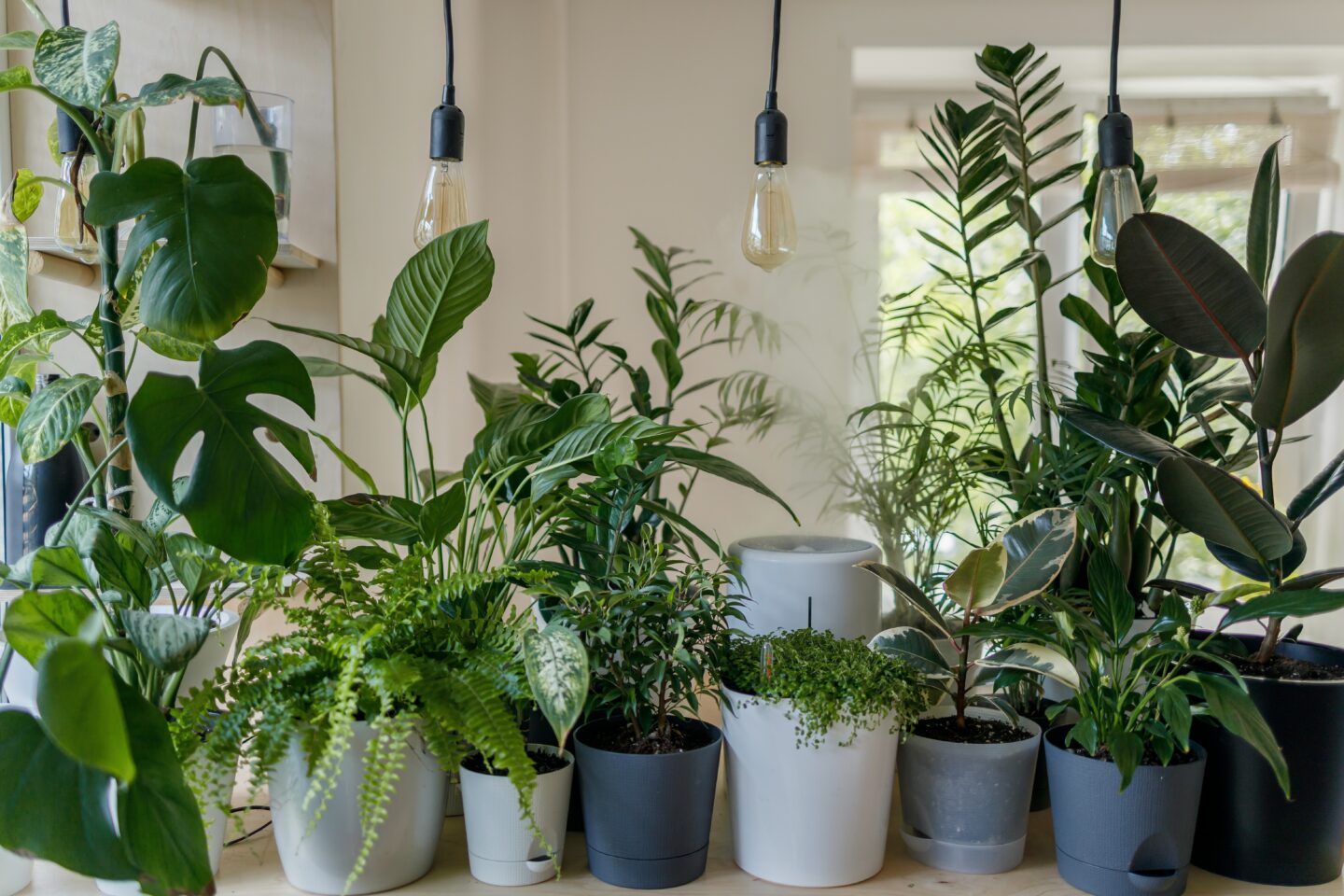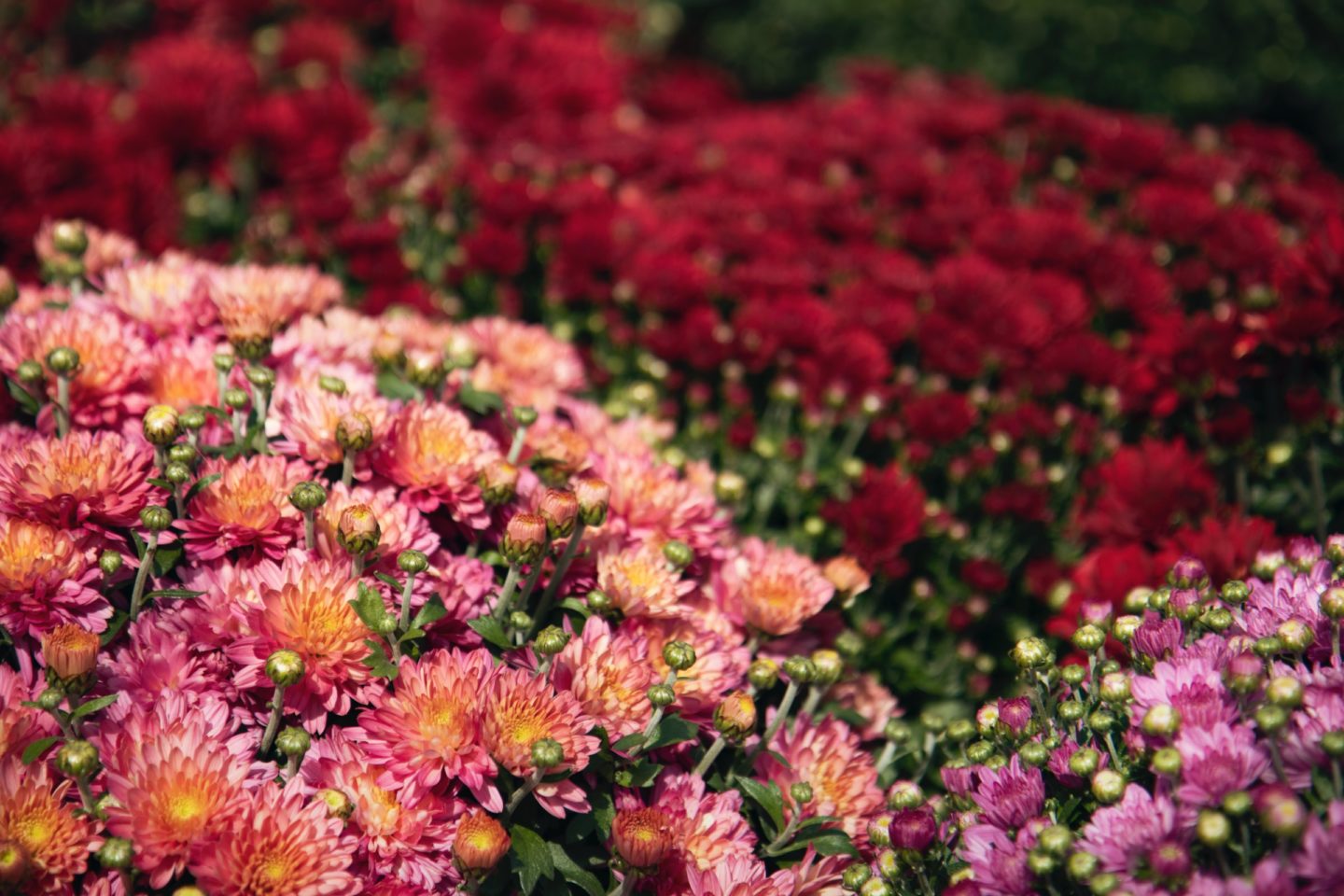There are many things to take into consideration when it comes to container gardening.
First you need to determine the placement of your planters. Are they going to be permanent or are you going to need to be able to move them? After you decide where you want them, you need to decide how many you would like and how large you want them. Would you prefer to have one large pot or would you like two or three pots of different sizes to fill the same space? Are your containers going to serve a useful purpose such as growing herbs or veggies? Or are they going to be purely aesthetic? Are these containers going to be used for more than just a summer display?
Once you have made the decision about where to place them, how many you want, and what their purpose is going be, it is time to start considering your plant material. Are your containers going to be in the sun or in the shade? This question plays a major role in what type of plants will thrive in your planting. Watering requirements also play a key part in plant selection. Some plants like to have consistently wet soil, while others like to dry out a bit between waterings. And lastly what color palette are you going to use?
If you are going to use your containers to grow Herbs or Vegetables, be sure that there is good drainage in the pots you choose. Full sun is also best for this type of planting. Almost every herb or vegetable can be grown in a container, but here are a few that are sure to do well.
- Herbs: Dill, Basil, Chives, Cilantro, Lavender, Parsley, Oregano, Rosemary, Sage & Thyme
- Vegetables: Peas, Tomatoes, Radishes, Cucumber, Peppers, Eggplant, Zucchini & Beans
For Spring/Summer containers, you need to take the size of the pot into consideration. You don’t want to overcrowd the plant material. For a 12” pot use 3-4 plants and for a 24” pot use 6-8 plants and so on. Using a slow release fertilizer is very important for annual plants, since their season is so short here in Vermont. Choosing a color palette is going to be important when it comes to plant selection. There are four different aesthetics you could choose from. They are as follows:
- Monochrome: All One Color
- Analogous: Hot Colors (Red, Orange, Yellow) vs Cool Colors (Blue, Green, Purple)
- Complimentary: Purple & Yellow, Red & Green, Blue & Orange
- Triad: Blue, Yellow, Red or Purple, Green, Orange
Once you have chosen your color palette, you next need to take balance into consideration. It is important to use varying heights to create interest and to give each plant importance within the planting. An easy way to remember this is always make sure you have a thriller, a filler and a spiller in your container. In other words, you need a tall plant focal plant, mid height plants & a plant to trail over the edge of the pot. If you remember to do this, your planters are sure to be beautiful. Here are some examples of each type of plant:
- Thriller/Tall Vertical Element (Back or Center): Grass, Coleus, Banana
- Filler/Mid-Section (Throughout): Nemesia, Osteospurmum, Ageratum
- Spiller/Low Trailing (At Edge): Vines, Petunia, Ivy Geranium
For Fall Containers you need to take cold hardiness/frost tolerance into consideration when choosing plant material. This is especially important here in Vermont where the fall weather is unpredictable. The use of different textures will also increase the aesthetic interest of your planting. This can be achieved by using a mixture of flowering plants and purely foliage plants together in the same pot. Fall plantings usually also consist of warmer tones like red, yellow, orange, rust & sometimes purple. Taking Varying heights into consideration is still important. Here are some examples of some plants that will work well for Fall Plantings:
- Flowering: Hardy Garden Mums, Sedum, Pansies & Nemesia
- Foliage: Ornamental Cabbage or Kale, Heuchera & Grasses
Winter Containers are much like large floral arrangements, using mixed cut boughs. They provide some aesthetic interest by front doors & on decks when nothing is in bloom. When creating a winter display, you will want to consider texture, as most of the components will be green. To begin, if your pot is large enough you can plant a small evergreen in the center and work out from there. If you are using a smaller container or don’t want to use any trees, just start with one type of bough. First place boughs all around the planter, by putting the cut end directly into the soil. Once you have worked your way around the container, mix in the second type of bough and so on. After you have added all the boughs you want, you can add some red twig dogwood or curly willow branches to provide interest. Adding some artificial stems of berries can be a nice look as well. You will want to use a plastic berry and not foam or real ones, as they will either crack or turn brown and not make it through the winter. Examples of Mixed boughs are as follows:
- Balsam, White Pine, Cedar & Juniper
- Additional Greens for protected spots include Boxwood, Holly & Magnolia



